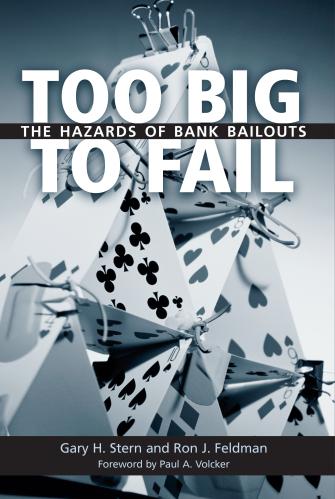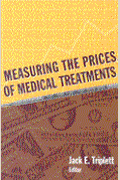What’s the latest thinking in fiscal and monetary policy? The Hutchins Roundup keeps you informed of the latest research, charts, and speeches. Want to receive the Hutchins Roundup as an email? Sign up here to get it in your inbox every Thursday.
Missing originations have lowered delinquency rates in the auto loan market
Delinquency rates in most consumer credit markets remained low both during the pandemic downturn and the subsequent recovery. Vitaly M. Bord and Lucas M. Nathe from the Federal Reserve Board find that a drop in originations of new loans to risky borrowers contributed to low delinquency rates. Using loan-level data, they find that originations plummeted among the lowest-credit-score borrowers at the start of the pandemic and have remained low, whereas originations for higher credit score borrowers have recovered. Consistent with lenders not originating the riskiest loans, delinquency rates among newly originated loans fell by more than delinquency rates on existing loans. The authors calculate that these “missing originations”—low-credit-score auto loans, many of which would have become delinquent had they been originated—can explain up to 30 percent of the decline in delinquency rates from December 2019 to June 2021. Moreover, they show that while auto loan originations declined for low-credit-score borrowers during the pandemic, inquiries for credit by these borrowers increased—suggesting that credit supply, rather than demand, drove the missing originations.
Demand-side indicators suggest a very tight labor market
Throughout the pandemic, economic indicators have sent mixed signals about the level of slack in the labor market. Alex Domash and Lawrence H. Summers of Harvard find that the headline unemployment rate is more effective in predicting wage inflation than the prime-age employment-to-population ratio but that job vacancy and quits rates hold almost all of the explanatory power in predicting wage inflation. They also show that current job vacancy and quits rates predict a labor market as tight as those the U.S. typically experiences with unemployment rates below 2%. They conclude that labor market tightness is likely a strong contributor to current inflationary pressure, both of which are unlikely to let up soon.
Racial disparities in PPP lending partly due to banks’ racial biases
The Paycheck Protection Program (PPP) gave businesses forgivable loans through banks and fin-tech firms. Sergey Chernenko of Purdue and David S. Scharfstein of Harvard find that Black-owned restaurants in Florida were 25% less likely than white-owned restaurants to receive PPP loans. Roughly 60% of the disparity in loan receipt reflects borrowers’ characteristics such as size, age, number of reviews and location. Existing relationships with banks had very little bearing on the disparity, they find, nor did differences in awareness of or demand for PPP loans. They attribute the remaining discrepancy to racial bias, partially corroborated by using county-level measures of explicit and implicit racial bias. Banks appeared to be much more biased than fin-tech and other non-bank lenders. They find no racial disparities in the distribution of Economic Injury Disaster Loans which were administered directly by the Small Business Administration and are not intermediated by banks.
Chart of the week: Yield curve flattening
Chart courtesy of Guru Focus
Quote of the week:
“I do think we need to frontload more of our planned removal of accommodations than we would have previously. We’ve been surprised on the upsurge on inflation; this is a lot of inflation in the U.S. economy: 7.5% on the CPI. These are numbers that Alan Greenspan never saw. They haven’t occurred in four years, so our credibility is on the line here. We do have to react to data. However, I think we can do it in a way that’s organized and not disruptive to markets. We’re only removing [some] accommodation, so it’s still an accommodative policy. The big picture is that inflation is much higher than we would have expected, six or nine months ago. Certainly 12 months ago. If you look at the Atlanta Fed’s inflation tracker, it’s all turned red. So, it doesn’t really matter how you measure inflation, they’re all above their norms,” says James Bullard, President of the St. Louis Federal Reserve Bank.
“There is some removal of accommodation already in the market, so that’s great. But still the Fed has to follow through and ratify those expectations that have been built into the two-year. And if we don’t, it makes it appear that we’re not defending our two percent inflation target and that we’re not trying to make sure that inflation is coming under control. I think the inflation that we’re seeing is very bad for low- and moderate-income households; real wages are declining, people are unhappy, consumer confidence is declining. This is not a good situation. We have to reassure people that we’re going to defend our inflation target and we’re going to get our inflation back to two percent.”
The Brookings Institution is financed through the support of a diverse array of foundations, corporations, governments, individuals, as well as an endowment. A list of donors can be found in our annual reports published online here. The findings, interpretations, and conclusions in this report are solely those of its author(s) and are not influenced by any donation.
The Brookings Institution is committed to quality, independence, and impact.
We are supported by a diverse array of funders. In line with our values and policies, each Brookings publication represents the sole views of its author(s).











Commentary
Hutchins Roundup: Auto loans, labor market tightness, and more
February 17, 2022